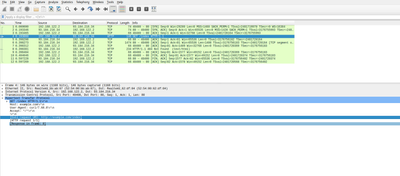- Support Forum
- Knowledge Base
- Customer Service
- Internal Article Nominations
- FortiGate
- FortiClient
- FortiADC
- FortiAIOps
- FortiAnalyzer
- FortiAP
- FortiAuthenticator
- FortiBridge
- FortiCache
- FortiCare Services
- FortiCarrier
- FortiCASB
- FortiConverter
- FortiCNP
- FortiDAST
- FortiData
- FortiDDoS
- FortiDB
- FortiDNS
- FortiDLP
- FortiDeceptor
- FortiDevice
- FortiDevSec
- FortiDirector
- FortiEdgeCloud
- FortiEDR
- FortiEndpoint
- FortiExtender
- FortiGate Cloud
- FortiGuard
- FortiGuest
- FortiHypervisor
- FortiInsight
- FortiIsolator
- FortiMail
- FortiManager
- FortiMonitor
- FortiNAC
- FortiNAC-F
- FortiNDR (on-premise)
- FortiNDRCloud
- FortiPAM
- FortiPhish
- FortiPortal
- FortiPresence
- FortiProxy
- FortiRecon
- FortiRecorder
- FortiSRA
- FortiSandbox
- FortiSASE
- FortiSASE Sovereign
- FortiScan
- FortiSIEM
- FortiSOAR
- FortiSwitch
- FortiTester
- FortiToken
- FortiVoice
- FortiWAN
- FortiWeb
- FortiAppSec Cloud
- Lacework
- Wireless Controller
- RMA Information and Announcements
- FortiCloud Products
- ZTNA
- 4D Documents
- Customer Service
- Community Groups
- Blogs
- Fortinet Community
- Knowledge Base
- FortiGate
- Technical Tip: 'certificate-inspection' and 'deep-...
- Subscribe to RSS Feed
- Mark as New
- Mark as Read
- Bookmark
- Subscribe
- Printer Friendly Page
- Report Inappropriate Content
Created on
02-27-2023
04:53 AM
Edited on
10-30-2025
02:07 AM
By
![]() Jean-Philippe_P
Jean-Philippe_P
| Description | This article describes 'ssl-inspection' usage for URL Web filter. |
| Scope |
FortiGate. |
| Solution |
For plain text HTTP, traffic HTTP request is not encrypted. Therefore 'ssl-inspection profile' is not mandatory and FortiGate can identify the full request URL http://example.com/index:
For HTTPS, however, the HTTP request is encrypted, and it is usually the first application data packet from the client. If only 'certificate-inspection' is used, the FortiGate cannot see the full request URL and can only identify the domain name in the SNI field of the client hello:
As shown in the picture, 'example.com' can be identified, but not the '/index' part. Therefore, in the case, for instance, to block: 'www.example.com/index' but allow 'www.example.com/xxxx', this would not be possible. It is only possible to apply rules based on the domain name, but not the URI.'
To view the complete URL path, particularly for encrypted HTTPS traffic, enabling deep inspection is necessary. Without deep inspection, only the domain name can be identified, not the entire URL path.
The inspection mode is applied per firewall policy, not directly in the URL filter. To enable 'certificate-inspection' or 'deep-inspection' from the CLI:
For deep-inspection:
For certificate-inspection:
|
The Fortinet Security Fabric brings together the concepts of convergence and consolidation to provide comprehensive cybersecurity protection for all users, devices, and applications and across all network edges.
Copyright 2025 Fortinet, Inc. All Rights Reserved.

